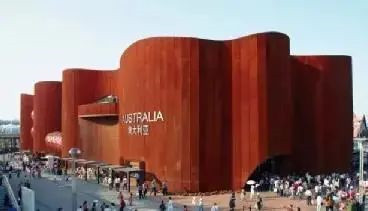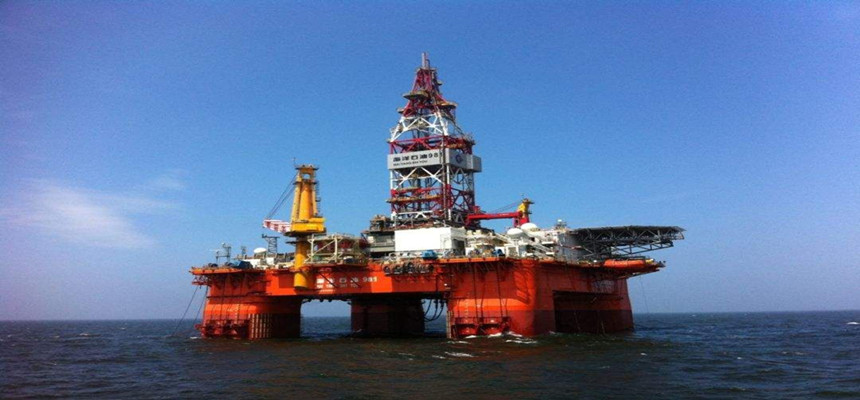Why is weathering steel more rusty and durable
Why is weathering steel more rusty and durable?
Weathering steel not only has the characteristics of ordinary steel such as easy ductility, high strength, and fatigue resistance, but at the same time, the corrosion resistance is 2-8 times that of ordinary steel, so it is "ugly" but expensive.
Is there such a strange building around you: it is a solid steel structure, but it is covered with thick red and black rust.

What is weathering steel?
Weathering steel, also known as atmospheric corrosion-resistant steel, is a low-alloy steel between ordinary steel and stainless steel. It is made of plain carbon steel with a certain amount of copper and phosphorus, chromium, nickel, titanium, vanadium and other corrosion-resistant elements. It not only has the characteristics of easy ductility, high strength and fatigue resistance of ordinary steel, but also can reach 2-8 times of ordinary carbon steel in terms of corrosion resistance.
Because of its excellent properties, weathering steel is expensive. Compared with ordinary steel, the price of weathering steel with similar properties is about 60% higher. Therefore, regardless of the ugly appearance of weathering steel, ordinary buildings can't use it. Only containers, railway vehicles, oil derricks, and drilling platforms, which are used in harsh environments and have high requirements for steel corrosion resistance, will use weathering steel. As for the reinforced concrete used in ordinary buildings, engineers are still reluctant to use weathering steel because the steel bars buried in the concrete rarely come into contact with oxygen and water.

Why can weathering steel rust and not rot?
Pure iron is not easy to rust, but ordinary steel usually contains impurities such as copper and carbon. These impurities are less active than iron. They form a galvanic cell with iron in the water-containing air (that is, a unit that generates electric current through oxidation-reduction reactions). This device separates the oxidation and reduction reactions and provides a "highway" for the corrosion of steel.
The rust produced by steel corrosion is a loose and porous structure, in which there are many micro-cracks connecting the pores with each other. In this way, rust is like a sponge, it can continue to absorb moisture in the air, allowing the steel to rust further until it rusts through.
Weathering steel is different from ordinary steel. At the beginning, it will rust on the surface like ordinary steel. Due to its higher degree of alloying, this process is even faster than ordinary steel. However, because the internal lattice of weathering steel is more complicated, a dark black dense rust layer will grow under the loose rust on the surface. This rust layer is composed of nano-particle α-FeOOH. In this dense rust layer, nickel atoms replace part of the iron atoms, so that the rust layer has cation selectivity and inhibits the penetration of corrosive anions.
It is this dense rust layer that makes the weathering steel rusty on the surface, but the inside will not be rusted further. In fact, as long as you distinguish carefully, you can see that the surface of weathering steel is different from ordinary rust: the rust of weathering steel is uniform and dense, and it is close to the surface of the steel to protect the steel; while the rust is mottled, loose and porous. It will drop scum as soon as you touch it. This kind of rust not only cannot protect the steel, but "brings wolves into the room" and sucks water and oxygen onto the surface of the steel.
The "Cabbageization" Road of Weathering Steel
In fact, weathering steel is not a material that has only recently appeared.
As early as 1900, the Americans had started the early research and development of copper-containing steel, which was the predecessor of weathering steel. However, in the first half of the 20th century, human science and technology were limited, and it was difficult to conduct in-depth research on materials. The mechanism behind the corrosion resistance of weathering steel was not clear, which greatly restricted the research and application of weathering steel. In addition, the total amount of human construction at that time was far from today, so the research progress of weathering steel has been relatively slow.
In China, it was not until 1960 that the research on copper-containing weathering steel started in WISCO.
But to this day, due to China's rapid economic development, the amount of engineering construction around the world has increased exponentially. Offshore oil platforms and seaport buildings have become ubiquitous, and the world's demand for weathering steel is becoming more and more urgent. Coupled with the more serious air pollution nowadays, metal structures will inevitably face the baptism of acid rain. As long as metal is put into use, it will naturally begin to corrode. As the holdings become larger and larger, the corrosion of metals has begun to cause heavy losses to the national economy. According to incomplete statistics, the annual economic losses caused by corrosion of steel structures account for 2%-4% of the GDP. At present, the annual economic losses caused by structural corrosion are as high as trillions of dollars. This means that due to metal corrosion, every year an entire British person is wiped out of a year of hard work.
The development and promotion of weathering steel can improve the durability of the structure and greatly reduce the economic loss caused by corrosion. Therefore, China's weathering steel research has caught up with a good time, started quickly, and is catching up very quickly.
Weathering steel not only has the characteristics of ordinary steel such as easy ductility, high strength, and fatigue resistance, but at the same time, the corrosion resistance is 2-8 times that of ordinary steel, so it is "ugly" but expensive.
Is there such a strange building around you: it is a solid steel structure, but it is covered with thick red and black rust.

What is weathering steel?
Weathering steel, also known as atmospheric corrosion-resistant steel, is a low-alloy steel between ordinary steel and stainless steel. It is made of plain carbon steel with a certain amount of copper and phosphorus, chromium, nickel, titanium, vanadium and other corrosion-resistant elements. It not only has the characteristics of easy ductility, high strength and fatigue resistance of ordinary steel, but also can reach 2-8 times of ordinary carbon steel in terms of corrosion resistance.
Because of its excellent properties, weathering steel is expensive. Compared with ordinary steel, the price of weathering steel with similar properties is about 60% higher. Therefore, regardless of the ugly appearance of weathering steel, ordinary buildings can't use it. Only containers, railway vehicles, oil derricks, and drilling platforms, which are used in harsh environments and have high requirements for steel corrosion resistance, will use weathering steel. As for the reinforced concrete used in ordinary buildings, engineers are still reluctant to use weathering steel because the steel bars buried in the concrete rarely come into contact with oxygen and water.

Why can weathering steel rust and not rot?
Pure iron is not easy to rust, but ordinary steel usually contains impurities such as copper and carbon. These impurities are less active than iron. They form a galvanic cell with iron in the water-containing air (that is, a unit that generates electric current through oxidation-reduction reactions). This device separates the oxidation and reduction reactions and provides a "highway" for the corrosion of steel.
The rust produced by steel corrosion is a loose and porous structure, in which there are many micro-cracks connecting the pores with each other. In this way, rust is like a sponge, it can continue to absorb moisture in the air, allowing the steel to rust further until it rusts through.
Weathering steel is different from ordinary steel. At the beginning, it will rust on the surface like ordinary steel. Due to its higher degree of alloying, this process is even faster than ordinary steel. However, because the internal lattice of weathering steel is more complicated, a dark black dense rust layer will grow under the loose rust on the surface. This rust layer is composed of nano-particle α-FeOOH. In this dense rust layer, nickel atoms replace part of the iron atoms, so that the rust layer has cation selectivity and inhibits the penetration of corrosive anions.
It is this dense rust layer that makes the weathering steel rusty on the surface, but the inside will not be rusted further. In fact, as long as you distinguish carefully, you can see that the surface of weathering steel is different from ordinary rust: the rust of weathering steel is uniform and dense, and it is close to the surface of the steel to protect the steel; while the rust is mottled, loose and porous. It will drop scum as soon as you touch it. This kind of rust not only cannot protect the steel, but "brings wolves into the room" and sucks water and oxygen onto the surface of the steel.
The "Cabbageization" Road of Weathering Steel
In fact, weathering steel is not a material that has only recently appeared.
As early as 1900, the Americans had started the early research and development of copper-containing steel, which was the predecessor of weathering steel. However, in the first half of the 20th century, human science and technology were limited, and it was difficult to conduct in-depth research on materials. The mechanism behind the corrosion resistance of weathering steel was not clear, which greatly restricted the research and application of weathering steel. In addition, the total amount of human construction at that time was far from today, so the research progress of weathering steel has been relatively slow.
In China, it was not until 1960 that the research on copper-containing weathering steel started in WISCO.
But to this day, due to China's rapid economic development, the amount of engineering construction around the world has increased exponentially. Offshore oil platforms and seaport buildings have become ubiquitous, and the world's demand for weathering steel is becoming more and more urgent. Coupled with the more serious air pollution nowadays, metal structures will inevitably face the baptism of acid rain. As long as metal is put into use, it will naturally begin to corrode. As the holdings become larger and larger, the corrosion of metals has begun to cause heavy losses to the national economy. According to incomplete statistics, the annual economic losses caused by corrosion of steel structures account for 2%-4% of the GDP. At present, the annual economic losses caused by structural corrosion are as high as trillions of dollars. This means that due to metal corrosion, every year an entire British person is wiped out of a year of hard work.
The development and promotion of weathering steel can improve the durability of the structure and greatly reduce the economic loss caused by corrosion. Therefore, China's weathering steel research has caught up with a good time, started quickly, and is catching up very quickly.




